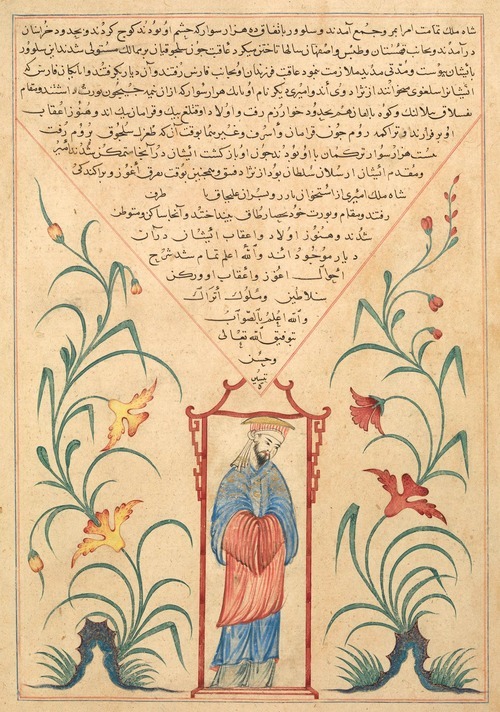This folio is from an illustrated manuscript that recounts a history of the world from Adam to Shah Rukh in 1425. Ghiyath al-Din Naqqash was an artist who accompanied an embassy to China in 1419–1425 that was sent by the Timurid ruler Shah Rukh (r.1409–1447). The artist travelled as an envoy of Shah Rukh’s son Baysunghur, who instructed him to keep a diary. So he described China in terms of its landscape, buildings, institutions, system of government and extraordinary sights. This sheet is known as the ‘Chinese Emperor standing in a Pavilion’. The diary of his visit was later rewritten by Hafiz-i Abru and incorporated into his historical work, Zubdat al-Tavarikh (Cream of Histories), the fourth part of the Majma ‘al-Tavarikh, which deals with the history of Timur and Shah Rukh, essentially the period of the life of Baysunghur.
The Ming ambassador to the Timurid empire, Chen Cheng (d. after 1457), made three diplomatic trips to Herat in Afghanistan, in 1414–1415, 1416–18 and 1418–1420. He was responsible for carrying letters from the Yongle emperor to Shah Rukh. Exchanges of embassy between the Timurid and Ming courts were important in easing tensions between the states. The Ming court desired horses and military intelligence, while the Timurids wanted luxury goods, such as silks and other textiles, and fine blue-and-white porcelain. Chinese embassies went to Samarkand, Bukhara, Herat, Shiraz and Isfahan. Timurid embassies travelled to Nanjing and later Beijing.
See this beautiful work in the BP exhibition Ming: 50 years that changed China, on until 5 Jan 2015.

沒有留言:
張貼留言